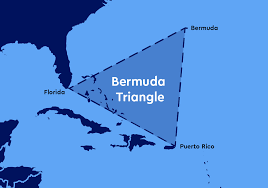Water is the most essential element for human survival, and when you’re out at sea for days or even weeks, having access to fresh water is not just a convenience — it’s a necessity. While ships can carry a limited amount of potable water, it is often not enough for long voyages. That’s where a Fresh Water Generator (FWG) comes in — a piece of marine equipment that converts seawater into freshwater, ensuring the crew has enough supply for drinking, cooking, washing, and other vital needs. In this blog, we’ll explore what a fresh water generator is, how it works, its types, benefits, and why it’s so crucial in maritime operations.
What is a Fresh Water Generator?
A Fresh Water Generator (FWG) is a device used on ships to produce fresh, drinkable water from seawater. The system uses physical and mechanical processes such as evaporation and condensation to separate the salt from seawater, resulting in clean water that can be used for domestic and operational purposes aboard a vessel.
FWGs are essential for long sea voyages, especially for large commercial ships, military vessels, and cruise ships where carrying large volumes of potable water is not feasible. These machines are a part of the ship’s auxiliary systems, operating continuously to supply water to the ship’s tanks.
Why Do Ships Need Fresh Water Generators?
Before the invention of fresh water generators, ships had to carry large tanks filled with freshwater, which added significant weight and consumed space that could otherwise be used for cargo. Moreover, carrying enough water for weeks or months was impractical, especially for larger crews.
Here are key reasons why FWGs are indispensable:
-
Space Saving: Reduces the need for large freshwater storage tanks.
-
Efficiency: Provides a continuous supply of water for domestic and engine room use.
-
Cost-Effective: Reduces the cost and logistics of bunkering water from ports.
-
Safety and Health: Ensures the crew has access to clean, safe drinking water.
How Does a Fresh Water Generator Work?
Most shipboard fresh water generators operate on the principle of distillation, which involves heating seawater until it evaporates and then condensing the vapor back into freshwater. The salt and other impurities are left behind.
There are several types of FWGs based on their method of operation:
1. Vacuum Distillation Type (Low Pressure Evaporator)
This is the most common type of FWG found on ships. It operates under a vacuum, which lowers the boiling point of water, allowing it to evaporate at around 40–60°C instead of 100°C. This is beneficial because it allows the generator to use waste heat from the ship’s engine.
-
Process:
-
Seawater is heated using jacket water or a steam system.
-
The heated water enters the evaporator chamber under vacuum.
-
Water evaporates and leaves behind salt and impurities.
-
Vapor is condensed using cold seawater in the condenser.
-
The resulting freshwater is collected and pumped into storage tanks.
-
2. Reverse Osmosis (RO) Type
RO generators use semi-permeable membranes to remove salt and other minerals from seawater. High-pressure pumps push the seawater through the membranes, and only clean water molecules can pass through.
-
Advantages:
-
Doesn’t require heat.
-
Compact in size.
-
Can be used where waste heat is not available.
-
-
Disadvantages:
-
High power consumption.
-
Membrane fouling and maintenance are concerns.
-
Main Components of a Fresh Water Generator
-
Evaporator Chamber – Where seawater is heated and evaporated.
-
Condenser – Where the vapor is cooled and condensed into freshwater.
-
Ejector Pump – Maintains the vacuum by removing air and non-condensable gases.
-
Fresh Water Pump – Transfers the distilled water to storage tanks.
-
Salinity Meter – Monitors the salt content in the distilled water.
-
Control Panel – Allows manual or automatic operation of the FWG system.
Factors Affecting FWG Performance
Several factors influence the efficiency and output of a fresh water generator:
-
Temperature of Jacket Water: Higher temperature leads to better evaporation.
-
Vacuum Pressure: Lower pressure improves evaporation rate.
-
Seawater Temperature: Affects the condensation process.
-
Maintenance: Clean tubes and components improve efficiency.
A properly maintained FWG can produce between 10 to 50 tons of fresh water per day, depending on its size and capacity.
Advantages of Using Fresh Water Generators
-
Self-sufficiency at Sea: Ships do not rely on port facilities for water.
-
Eco-friendly: Reduces plastic waste and transportation fuel required to supply water.
-
Operational Continuity: Allows for uninterrupted ship operations.
-
Reduces Port Charges: Avoids the cost of purchasing water from terminals.
Challenges and Maintenance
Like any machinery, FWGs require regular maintenance to operate efficiently. Common challenges include:
-
Scaling and Fouling: Salt and mineral deposits reduce heat transfer efficiency.
-
Corrosion: Continuous contact with seawater can corrode internal parts.
-
Vacuum Leaks: Affect the pressure and efficiency of the system.
-
Membrane Damage (in RO units): Requires replacement and careful monitoring.
Scheduled cleaning of heat exchanger tubes, checking salinity levels, inspecting seals, and replacing worn-out parts are part of routine FWG maintenance.
Future Trends: Smart FWGs and Hybrid Systems
As the maritime industry moves toward digitalization and energy efficiency, modern FWGs are being designed with:
-
Automation and Remote Monitoring: For better control and predictive maintenance.
-
Hybrid Systems: Combining waste heat recovery with renewable energy sources.
-
Improved Materials: Use of corrosion-resistant alloys and nano-coated membranes.
Some newer ships even feature solar-powered desalination units, contributing to sustainable ship operations.
Conclusion
The fresh water generator is a quiet yet powerful ally on every ship, silently turning seawater into life-sustaining freshwater. Its importance cannot be overstated — it ensures the well-being of the crew, supports machinery operation, and enhances a vessel’s self-sufficiency. As maritime technology advances, FWGs are becoming more efficient, compact, and environmentally friendly. Whether you’re a seafarer, marine engineer, or someone fascinated by ocean travel, understanding how a FWG works gives you a deeper appreciation for the unseen systems that keep life at sea running smoothly.
